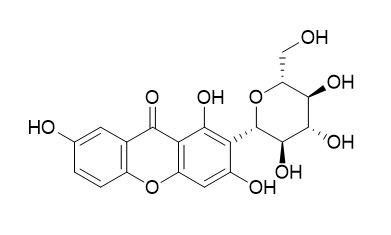Neolancerin
Neolancerin is a natural product with weak cytotoxic activity against HL-60 cells.
Inquire / Order:
manager@chemfaces.com
Technical Inquiries:
service@chemfaces.com
Tel:
+86-27-84237783
Fax:
+86-27-84254680
Address:
1 Building, No. 83, CheCheng Rd., Wuhan Economic and Technological Development Zone, Wuhan, Hubei 430056, PRC
Providing storage is as stated on the product vial and the vial is kept tightly sealed, the product can be stored for up to
24 months(2-8C).
Wherever possible, you should prepare and use solutions on the same day. However, if you need to make up stock solutions in advance, we recommend that you store the solution as aliquots in tightly sealed vials at -20C. Generally, these will be useable for up to two weeks. Before use, and prior to opening the vial we recommend that you allow your product to equilibrate to room temperature for at least 1 hour.
Need more advice on solubility, usage and handling? Please email to: service@chemfaces.com
The packaging of the product may have turned upside down during transportation, resulting in the natural compounds adhering to the neck or cap of the vial. take the vial out of its packaging and gently shake to let the compounds fall to the bottom of the vial. for liquid products, centrifuge at 200-500 RPM to gather the liquid at the bottom of the vial. try to avoid loss or contamination during handling.
Molecules.2019, 24(2):329
Int Immunopharmacol.2019, 71:361-371
Buildings2023, 13(5), 1112.
Talanta.2022, 249:123645.
Current Pharmaceutical Analysis2017, 13(5)
Hum Exp Toxicol.2017, 36(11):1169-1176
Russian Journal of Bioorganic Chemistry2023, 49:1689¨C1698.
BMB Rep.2020, 53(4):218-222.
Int J Mol Sci.2020, 21(9):3392.
Neuropharmacology2019, 151437
Related and Featured Products
Food Science and Biotechnology volume 22, pages945–949 (2013)
Isolation of xanthones from adventitious roots of St. John’s Wort (Hypericum perforatum L.) and their antioxidant and cytotoxic activities[Reference:
WebLink]
In this phytochemical study, 5 xanthones, 1,3,5,6-tetrahydroxyxanthone [1], 1,5,6-trihydroxy-3-methoxyxanthone [2], ferrxanthone [3], brasilixanthone B [4], and Neolancerin [5] were isolated from adventitious roots of St. John’s wort (Hypericum perforatum L.). Compound 1–5 were evaluated for antioxidant activities using the intracellular reactive oxygen species (ROS) radical scavenging 2′,7′-dichlorfluorescein-diacetate (DCFDA) assay and for cytotoxic activity against the HL-60 human promyelocytic leukemia cells. Among them, compound 1–4 exhibited scavenging activity with inhibition values of 27.4–33.2% at 10 μM; compound 1, 2, and 4 reduced the viability of HL-60 cells significantly, with IC50 values of 31.5, 28.9, and 27.7 μM, respectively.
Journal of Food and Drug Analysis: 2008, Vol. 16 : Iss. 3 , Article 12.
Norepinephrine transporter inhibitors from Polygala tenuifolia[Reference:
WebLink]
Using norepinephrine transporter binding assay-directed fractionation, polygalasaponin XXVIII (1) and 3-O-β-D-glucopyranosyl presenegenin 28-[O-β-D-galatopyranosyl (1→4)-β-D-xylopyranosyl- (1→4)-α-L- rhamnopyranosyl(1→2)- β-D-fucopyranosyl] ester (2), together with five xanthone glycosides, Neolancerin (3), polygalaxanthone IX (4), sibiricaxanthone (5), polygalaxanthone III (6), and 7-O-methylmangiferin (7), five phenolic glycosides, tenuifoliside A (8), sibiricoses A3 (9), A5 (10), A6 (11) and 3′,6-disinapoyl sucrose (12), a triterpenoid, tenuifolin (13), methyl sinapoate (14), and adenosine (15) were isolated from the active fraction of an aqueous extract of the roots of Polygala tenuifolia. Their structures were elucidated by extensive NMR and mass spectroscopic analyses. Compounds 1 and 2 were shown to inhibit norepinephrine reuptake through blocking norepinephrine transport by 77% and 28% in the norepinephrine transporter binding assay at concentrations of 4.53 μM and 3.95 μM, respectively.



